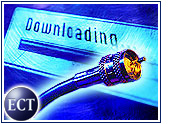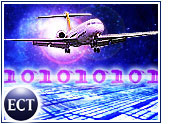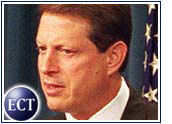
High-speed Internet access, long promised but slow to deliver, will accelerate across the U.S. in the near future, according to a new report by Internet analyst company eMarketer.
There are currently around 5.43 million subscribers to high-speed, or broadband, Internet services, which make up only 14.6 percent of all U.S. Internet subscribers. However, the report predicts that there will be 32 million broadband users by 2003, a six-fold increase.
“At year end 1999, broadband Internet access had hardly made its presence felt in the U.S. market,” the report said. “The inability of service providers to roll out broadband quickly across the United States, coupled with higher access costs, has slowed adoption of these services.”
DSL To Overtake Cable
The report also said that while cable modem is the most popular way of delivering broadband to customers now, it will be overtaken in 2003 by digital subscriber line (DSL) technology. Cable and DSL are the only two methods of delivering broadband services that are currently widely available to residential users.
Broadband subscribers through cable modems number 1.47 million, but will increase to 9.78 million by 2003. DSL users currently number slightly more than half a million, a figure that will soar to 10.95 million by 2003, the report predicts.
Together, the two services will account for two-thirds of all broadband subscribers. Other methods to deliver broadband include fiber optic networks, wireless and satellite.
Businesses Prefer Fiber Optic
Businesses, too, will increasingly switch to broadband. In 1999, business broadband users numbered only 3.49 million, but will expand to 11.3 million by 2003, the report said, “as more small and medium-sized businesses exploit cheaper access methods such as DSL and wireless.”
Still, the augmented broadband use by businesses will be driven primarily by the fiber optic market, with subscriber markets growing from 1.7 million to 5.1 million by 2003.
Though business use will rise, it will be dwarfed by residential users who will account for about 90 percent of the broadband market.
FCC Criticizes Providers
Broadband service providers have been criticized for failing to penetrate smaller and more remote markets in the United States. Even those potential customers in markets where broadband is available have complained of long waiting times and technical glitches.
Also, a report from the U.S. Federal Communications Commission (FCC) earlier this year said high-speed service to Americans is available mainly for the affluent. It identified five groups as vulnerable to being bypassed: rural, inner-city, low-income, minority and tribal.
The report said 59 percent of the ZIP codes in the U.S. have at least one subscriber to “advanced services” and 91 percent of the population live in those ZIP codes, which are concentrated in affluent suburban and urban areas.
Despite a lack of comprehensive, detailed statistics, the report concluded that ZIP codes with large concentrations of minorities and those with low incomes generally had few or no subscribers. Rural dwellers in particular have been denied access to service.
Less than 20 percent of rural ZIP codes — defined as areas with fewer than six people per square mile — had any broadband subscribers, while 90 percent of ZIP codes with 3,000 people per square miles had subscribers.









































Social Media
See all Social Media